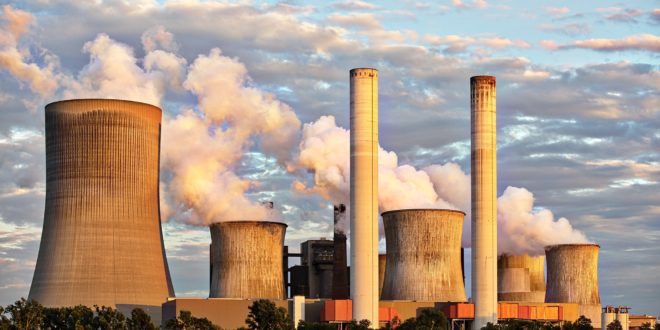Nuclear power is a polarizing subject in the United States. Research has shown an even split in public opinion, with 49% of Americans in favor of nuclear power and 49% against it. This mixed reception is the product of domestic energy prices, safety concerns and the historical crises that engendered them.
With the accident at Three Mile Island — and, more notably, Chernobyl — the potential dangers of a nuclear fuel source are always present in public discourse. It’s difficult to talk about nuclear power without touching on the effects of radiation. In truth, the word “nuclear” has a pretty negative connotation.
At the same time, we’ll need to invest in new sources of energy if we’re going to meet the energy demands of a growing population. The United Nations estimates an increase from 7.6 billion to 9.8 billion people by 2050, and this rapid expansion will place pressure on our existing infrastructure.
In light of these projections, will nuclear power grow with us into the future? Or will we look elsewhere for sources of energy? It starts with an understanding of the situation, looking at the risks, benefits and potential of nuclear power over the next few decades.
The Risks of Nuclear Power
According to a recent poll, 47% of U.S. citizens believe that nuclear power is safe. Almost half of U.S. citizens at 49% believe it’s unsafe, and 4% gave no opinion. A certain degree of division over the safety of nuclear power is reasonable, especially with past events.
The accident at Three Mile Island is a fitting example. A combination of design-related problems, equipment malfunctions and worker errors caused an emergency near Middleton, Pennsylvania. The event had far-reaching implications for nuclear power in the United States.
Of course, incidents like the partial meltdown at Three Mile Island are exceedingly rare. Today’s nuclear facilities use high-quality air compressors for back-up power generators, reinforcing the safety of a power plant. Since any failure in instrumentation or containment could have disastrous consequences, the workers are prepared.
Still, even with these safeguards, the public perception of nuclear power is mixed. It’s all too easy to focus on individual disasters than the success of the country’s nuclear plants. This success is crucial to acknowledge if we’re going to move forward with a clear understanding of our options — and it helps to know what exactly we’re dealing with.
The Benefits of Nuclear Power
As mentioned earlier, the UN has estimated a dramatic increase in the global population. The demand for electricity is also increasing around twice as quickly as the overall energy use, and it’s likely going to rise by more than half by 2040. These factors support the need for a greater investment in nuclear power.
Furthermore, almost all reports on the future energy supply from major organizations suggest that nuclear power will prove important in environmental preservation. It’s an environmentally friendly form of energy generation, reliable on the massive scale we’d require to match our current rate of growth.
A two-year study from the Massachusetts Institute of Technology Energy Initiative, or MITEI, has also underscored the necessity of nuclear power. According to MITEI, “…our analysis shows the potential contribution nuclear can make as a dispatchable low-carbon technology. Without the contribution, the cost of achieving deep decarbonization targets increases significantly.”
In short, nuclear power is indispensable in achieving a cost-effective system for sustainable energy generation.
Looking Toward the Future
Researchers and scientists have emphasized the need for nuclear power in the next several decades. Its value as a low-carbon source of electricity is essential to recognize, a key consideration with the escalating dangers of climate change and air pollution. A small amount of concern is rational, of course, but it’s vital to work past that initial feeling of distrust and look toward the future.
In time, with investment, nuclear power will transcend its dark history and be a source of light in a world that desperately needs it.

Green Jobs
How to Apply for a Green Job With the demand for green jobs skyrocketing so far in 2017, giving yourself a unique edge can be difficult—yet absolutely necessary—in order for you to become a proud worker for Mother Earth. Follow these steps to successfully claim your next environmentally friendly employment opportunity. 1. Resume: Make sure … Continue reading..



